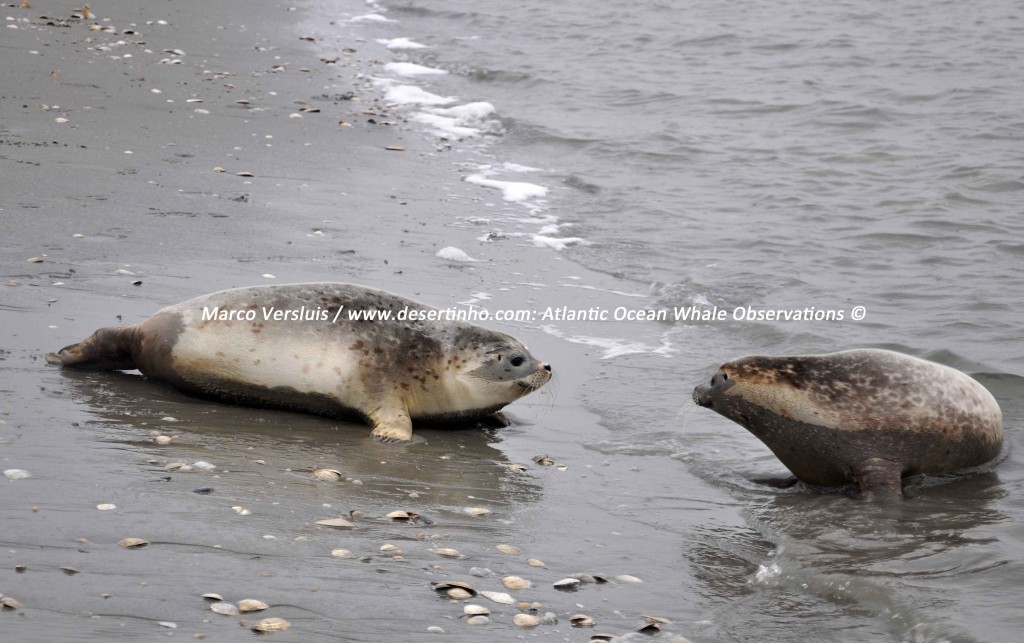The most common seal species in the North sea and Wadden sea is the common seal (Phoca vitulina). They principally live in the west part of the Netherlands and the Wadden islands. The Wadden sea is an important place for the common seal because of its fish and sandplates where they can rest and give birth to their pups. The pups of the common seal are born in between may and june and they have no white fur at birth. Therefore young common seal pups can swim almost inmediately when they are born. For Gray seal pups (Halichoerus grypus) it is the opposite. Common seal pups are independent of their mother during their suckling period like any other seamammal. I call these seals the “Thermometer” of North sea and Wadden sea. When this seal species is sick, you know that there is some kind of problem going on in the ecosystem. The Common seal is on top of the foodchain in both seas.
De gewone zeehond (Phoca vitulina) is de meest voorkomende zeehondensoort in de Waddenzee en de Noordzee. Deze soort leeft in het zuiden van Nederland en de Waddeneilanden. De Waddenzee is een belangrijke plek voor hen vanwege de hoeveelheid vis en de aanwezigheid van zandplaten waar op ze kunnen rusten en bevallen van hun pups. De pups van de gewone zeehond worden geboren in de maanden mei en juni en hebben bij de geboorte geen witte vacht. Dit is dan ook de reden waarom deze pups vrijwel direct kunnen zwemmen na de geboorte. Dit in tegenstelling tot grijze zeehonden (Halichoerus grypus) pups. Gewone zeehonden pups zijn na de geboorte afhankelijk van hun moeder, zoals ieder ander zeezoogdier, vanwege de zoogperiode. De gewone zeehond is “de” thermometer van het ecosysteem in beide zeeën. Zodra gewone zeehonden ziek worden is er vaak iets mis in het ecosysteem waarin ze leven. Gewone zeehonden staan aan de top van de voedselketen in beide zeeën.
